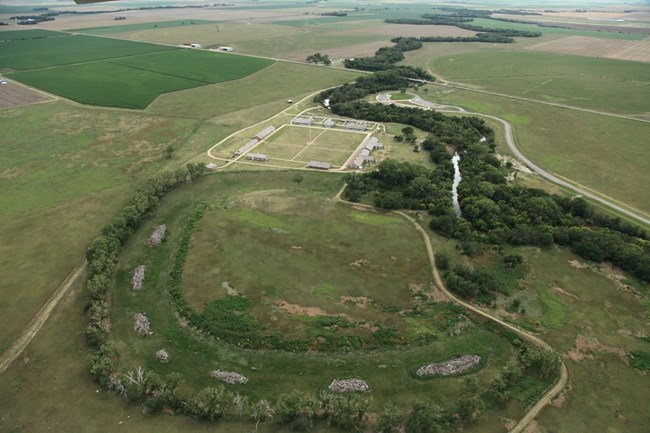
NPS Photo
Overview
Fort Larned National Historic Site features a half-mile nature trail, a mowed loop path along the edges of grassland, woodland, and riparian habitats. Along the way, view a broad diversity of native plants and animals including native and restored prairie areas. Cottonwood trees shade the banks of the Pawnee Fork while big bluestem and buffalo grass wave in the steady Kansas breeze.The Fort Larned National Historic Site Vegetation Inventory Project delivers many geospatial and vegetation data products, including an in-depth project report discussing methods and results, which include descriptions to vegetation associations, field keys to vegetation associations, map classification, and map-class descriptions. The suite of products also includes a database of vegetation plots, and accuracy assessment (AA) sites; digital images of field sites; digital aerial imagery; digital maps; a contingency table listing AA results; and a geodatabase of vegetation, field sites (vegetation plots, and AA sites), aerial imagery, project boundary, and metadata.
Products
The products of vegetation mapping projects are stored and managed in the National Park Service's Data Store, a repository for documents and publications relating to park resources. From the highlighted items below, click on the type of information you are looking for.
Last updated: October 2, 2018
